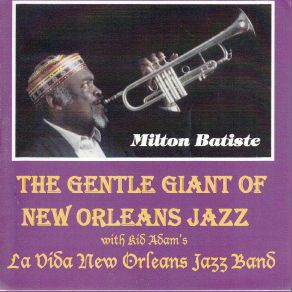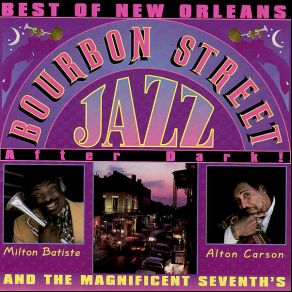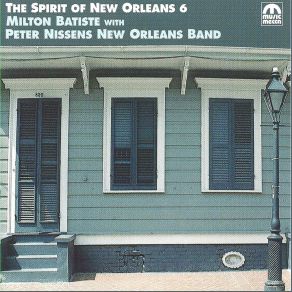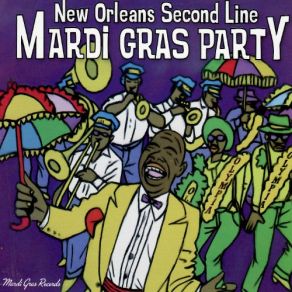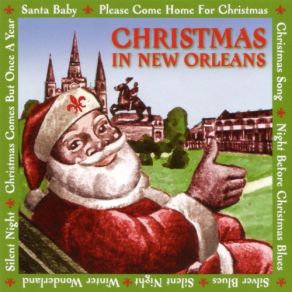Milton Batiste
Wikimp3 information about the music of Milton Batiste. On our website we have 3 albums and 5 collections of artist Milton Batiste. You can find useful information and download songs of this artist. We also know that Milton Batiste represents Jazz genres.
Biography
[Edit]One of the biggest New Orleans jazz funerals in modern times was held on a sunny spring day in 2001, when the popular musician Milton Batiste passed away. This was only fitting, since he had played at so many similar affairs himself. Batiste was 66 when he died. After a lifetime in music, he had many friends from all the various musical worlds in which he traveled. His friends gave him a good send-off, New Orleans style. They followed his casket through the streets, while the band played dirges. After the preacher cut loose the body and it went on home to be with the Lord, the crowd broke out in joyous songs and dance, as is the tradition.
Wearing his hat as musical historian, Milton Batiste chronicled this unique tradition on a 1998 CD. Entitled New Orleans Jazz Funerals From the Inside, Batiste and the Olympia Brass Band, play the music that accompanies such an event. Commentary by Batiste is interspersed throughout the record, shedding light on this beautiful New Orleans ceremony that has buried ordinary citizens as well as luminaries such as Louis Armstrong and Danny Barker.
Milton Batiste wore many other hats. He was often on the streets with the marching bands. He played trumpet and later led the renowned Harold Dejean's Olympia Brass Band. He also formed the Young Olympians, which was his vehicle for passing along what he knew to younger musicians.
His rhythm and blues days saw him playing with Professor Longhair, Eddie Bo, Clarence "Frogman" Henry, and Little Richard. He recorded with Champion Jack Dupreeand Guitar Slim, Jr.. Batiste showed his interest in gospel music by producing and performing on the Gospel Soul Children CD.
Another hat Batiste wore was actually a warrior's bonnet. As Chief of the Flaming Arrows, Batiste was decked out in the feathers and sequins worn by the Mardi Gras Indians during the Carnival season. This unique aspect of New Orleans culture is practiced by the dozen or so tribes of Mardi Gras Indians, who play music and dance in their beautiful costumes, stopping in the streets to vie with other Indians they meet to decide who is the prettiest. Batiste's Here Come the Indians Now chronicles such a day.
Then there was the hat of Creole jazz musician. This position took Batiste to clubs in the French Quarter, such as Preservation Hall, and the New Orleans Jazz and Heritage Festival, the ebullient Milton Batiste shone in the spotlight, with his musical friends. A recording that captures his infectious charm is Best of Bourbon Street Jazz. This is traditional jazz at its best.
Batiste also enjoyed playing a more contemporary jazz sound. The CD, Milton Batiste With the Rue Conti Jazz Band shows this side of the musician. He performs on trumpet, fluglehorn, vocals, tambourine, and trumpet mouthpiece. His winning personality shines through as he plays with the band on numbers such as Just A Closer Walk With Thee, and Eh La Ba.
Batiste also recorded two solo CD's in 1996 on his own label. They are Embraceable Melodies, and Milton Batiste and La Vida Jazz.
A traditional song played at jazz funerals is Didn't He Ramble?. No tune could be more appropriate to describe the rich musical life of Milton Batiste.
Title: Best of New Orleans Bourbon Street Jazz After Dark!
Artist: Milton Batiste, Magnificent Sevenths
Genre: Jazz
Title: Spirit of New Orleans, Vol. 6 (feat. Peter Nissens New Orleans Band)
Artist: Milton Batiste
Genre: Jazz
Collections
Title: New Orleans Jazz Gumbo: Jazz Blues & Gospel
Genre: Jazz
Title: Jazzly Yours (feat. Milton Batiste)
Genre: Jazz
Title: Christmas In New Orleans
Genre: Jazz
Title: New Orleans Reborn - Double CD
Genre: Jazz
Title: New Orleans Second Line Mardi Gras Party
Genre: Jazz
Featuring albums
Title: Christmas In New Orleans
Artist: Various
Genre: Blues, Jazz, Vocal Jazz, Traditional Pop Music
